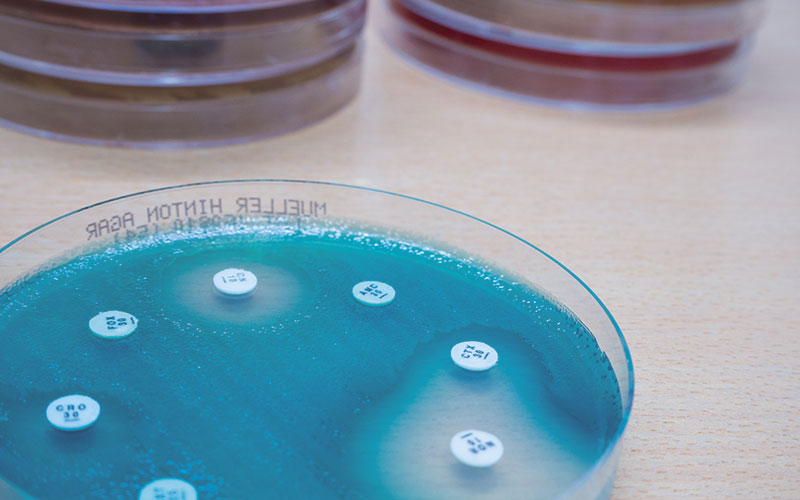After attending a two-day interactive Heralding Education on Antibiotic Resistance (HEAR) course, Mahrukh Kerawala and Rizalea Echaluse outline the key points.

There is a direct correlation between antimicrobial use and developing antimicrobial resistance. There are major challenges in reducing this threat and although there is no real solution, a rational approach and antimicrobial stewardship efforts are changing behaviour.
The antimicrobial stewardship strategies are: the prudent use of available antibiotics by restriction and preauthorisation, conducting prospective audits, promoting education and public engagement, optimising prescribing practices by de-escalation of therapy, dose optimisation and parenteral to oral conversion.
Microbiology laboratories have contributed to the antimicrobial stewardship efforts by integrating rapid diagnostic and susceptibility testing, laboratory investigation of phenotypic drug resistance and selective reporting, as well as analysis of antibiogram surveillance data. Antimicrobial stewardship has achieved optimal clinical outcome in patients, reduction in antimicrobial resistance and expenditure.
Carbapenem-resistant Enterobacteriaceae
Carbapenemases may confer resistance to all beta-lactam antibiotics. Carbapenemase-producing isolates usually exhibit co-resistance to other antimicrobials and infections are associated with high mortality rates. The “big five” carbapenemases are: KPC, NDM, VIM, OXA-48 and IMP.
The algorithm for carbapenemase detection, according to EUCAST, is the phenotypic method based on meropenem MIC or disc test followed by synergy testing with boronic acid, cloxacillin, dipicolonic acid and temocillin resistance. The other tests also available are: Gradient strip tests, Carba NP, carbapenem inactivation method (CIM) test, Immunochromatographic test and by matrix-assisted laser desorption ionization – time of flight (MALDI-TOF) mass spectrometry.
Colistin broth micro dilution
Broth microdilution (BMD) is so far the only valid method for colistin testing.
Clinicians are considering colistin as the therapeutic option for the treatment of severe infections caused by multidrug-resistant microorganisms and there is a need to determine the minimal inhibitory concentration (MIC). BMD method (ComASP Colistin) is simple to perform, accurate and is less time consuming. A panel containing colistin in 7 two-fold dilution allows for testing up to four samples. All wells are rehydrated with a standardised microbial suspension. At the end of incubation, observe the growth in the wells and establish the MIC i.e. the lowest concentration of antibiotic that inhibits visible growth.
Synergy testing
Synergy testing is indicated in cystic fibrosis, multiple drug-resistant organisms, or critical infections. MIC test strip synergy applicator system consists of MTS synergy applicator platform and MTS synergy delivery tool to facilitate the operators in performing the tests, therefore increasing the reproducibility. Two strips, each containing one of the antimicrobials of interest, are placed perpendicular to each other, intersecting at the MIC for each antimicrobial when tested alone.
Direct MIC testing
Rapid results and direct specimen, such as blood culture testing, may provide clinicians with therapy guidance and commencing empiric therapy in urgent clinical situations. The results are considered preliminary and should be confirmed by standardised pure isolate testing the next day.
Undiluted positive blood culture is spread evenly onto the chromatic Mueller Hinton (MH) agar plate. MIC test strip (MTS) of the drug is placed on the chromatic MH plate and examined next day for inhibition ellipse. The chromatic MH allows one to discriminate mixed population simultaneously with susceptibility testing.
Mahrukh Kerawala is Lead Healthcare Scientist and Quality manager and Rizalea Echaluse is a Biomedical Scientist, both work in microbiology at Health Services Laboratories. The authors received financial funding from Launch Diagnostics to attend this meeting.
Picture credit | Shutterstock
